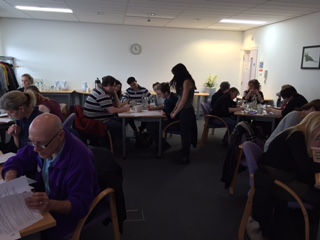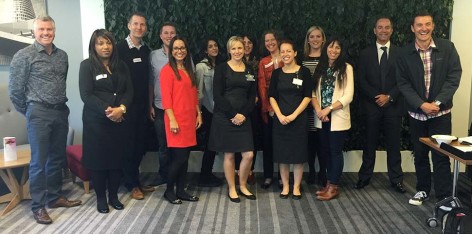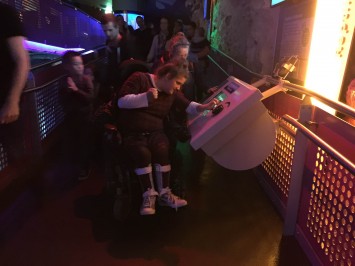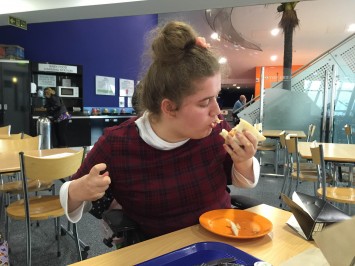Accessible tourism, is it worth it in a business model?
Is your business part of today’s competitive tourist industry within the UK? Are you achieving your accessible tourism status?
Are you looking at raising your profile, getting a head of the game and being competitive with others?
Good, because accessible tourism is a multi million pound industry.
Are you in the market of accessible tourism?
As a business owner myself I understand the main goals of any business and that is growth and sustainability. As a business owner I work hard to achieve these goals just like you do because I want my business to grow.
There are many ways to grow a business and many ways to make it sustainable. A business coach and they’ll show you the way around the markets and how to focus your attention on attracting the current customers.
Professional Marketers will show you round the latest trends of products, services or technology. Still there’s one section many are still missing out on.
Every year new tourist attractions are opening up, each applying contemporary designs within their buildings and updated customer care experiences.
This runs the risk of leaving current and outdated businesses and tourist venues behind. Either businesses modernise to meet their customer’s needs in today’s market or they risk missing out resulting in lower turnover. .
What I’d like to do is bring your attention to why this section of the market – accessible tourism – is so powerful:
- 65 million people in the UK (source: United Nations Department of Economic and Social Affairs).
- There are around 12 million registered disabled people within the UK (that’s about 1 in 5 people), DWP 2014.
- There are 2 million people with sight problems in the UK (dlf.org.uk). Is your business and visitor attraction able to support people who are visually impaired?
- 9% of the UK population is a wheelchair user (www.disabled-world.com). Have you made adaptions both on the outside and within your building?
- There are 770,000 registered disabled children under the age of 16 in the UK. Does your attraction welcome children? dlf.org.uk
- More than 11 million people within the UK experience some form of hearing loss that equates to 1 in 6 people (actiononhearingloss.org.uk). Have you considered this at your reception, service or support desk as much as supporting your visitors around the attraction to remain orientated, involved and comfortable?
Accessible tourism is a big market so how do you get in on it?
- Does your first point of contact which could be your website or over the telephone information service, give clear information around your accessibility information?
- Is your car parking and queuing for entry managed well?
- Are your disabled toilets accessible? Clearly signed? Well managed and a good size?
- Are your signs clear and are they in brail?
- Do you have different levels? Do you have lifts and if so are they well maintained? Do you have ramps available? There may only be a couple of steps between one floor and the next but this proves to be a huge obstacle for someone in an electric wheel chair.
- Are rails provided along the stairs?
- Are door handles at a height that can be accessed by wheel chair users?
- Are your reception desks at a height that wheel chair users can write on if needed? If not can an area be provided for this?
- Are your fire, health and safety policies all up to date?
Yes, there’s so much to think about and that is why we at Visits Unlimited provide an excellent service to support you to make the changes to your venue. We are a specialised team brought together to support venue’s and businesses to match their service and environment provisions with visitors disability access needs.
From access audits to training within customer service and the visitor’s journey, our approach is designed to provide you with the complete package.
What you focusing on accessible tourism means to people like me.
For me as a parent it goes deeper than a business model, as a parent of a child with learning and physical disabilities; finding a venue or attraction that allowed us to have a fun family day was always our top priority and in the early days, this wasn’t easily achieved. The result of us finding one where we felt respected as a family unit and supported was when we found an attraction that really worked for us we did the obvious, we returned. We went back because we knew it and we knew it worked. Then we did the second obvious thing, we told our friends. We weren’t passing tourists, we went back and we would use that mighty powerful marketing tool called word of mouth.
Yes yes yes to accessible tourism
So the question I asked at the beginning was; is the accessible tourism market worth it for a business to invest in?
Businesses are required by law to make fair adjustments to ensure that accessibility for disabled people is provided and fairness must always be at the centre of any business model, however you can’t ignore that accessibility makes good business sense regarding profit.
An attraction is built to provide an experience and the power of word of mouth. Word of mouth through groups, social media and reviews in this current climate is beyond powerful.
It doesn’t take a moment to type into my browser to see poor reviews of attractions written by those who’ve experienced a lack of accessibility.
Going back to the statistics at the beginning of this post, if you don’t make you’re visitor centre accessible you’re potentially excluding around 1 in 5 visitors.





























